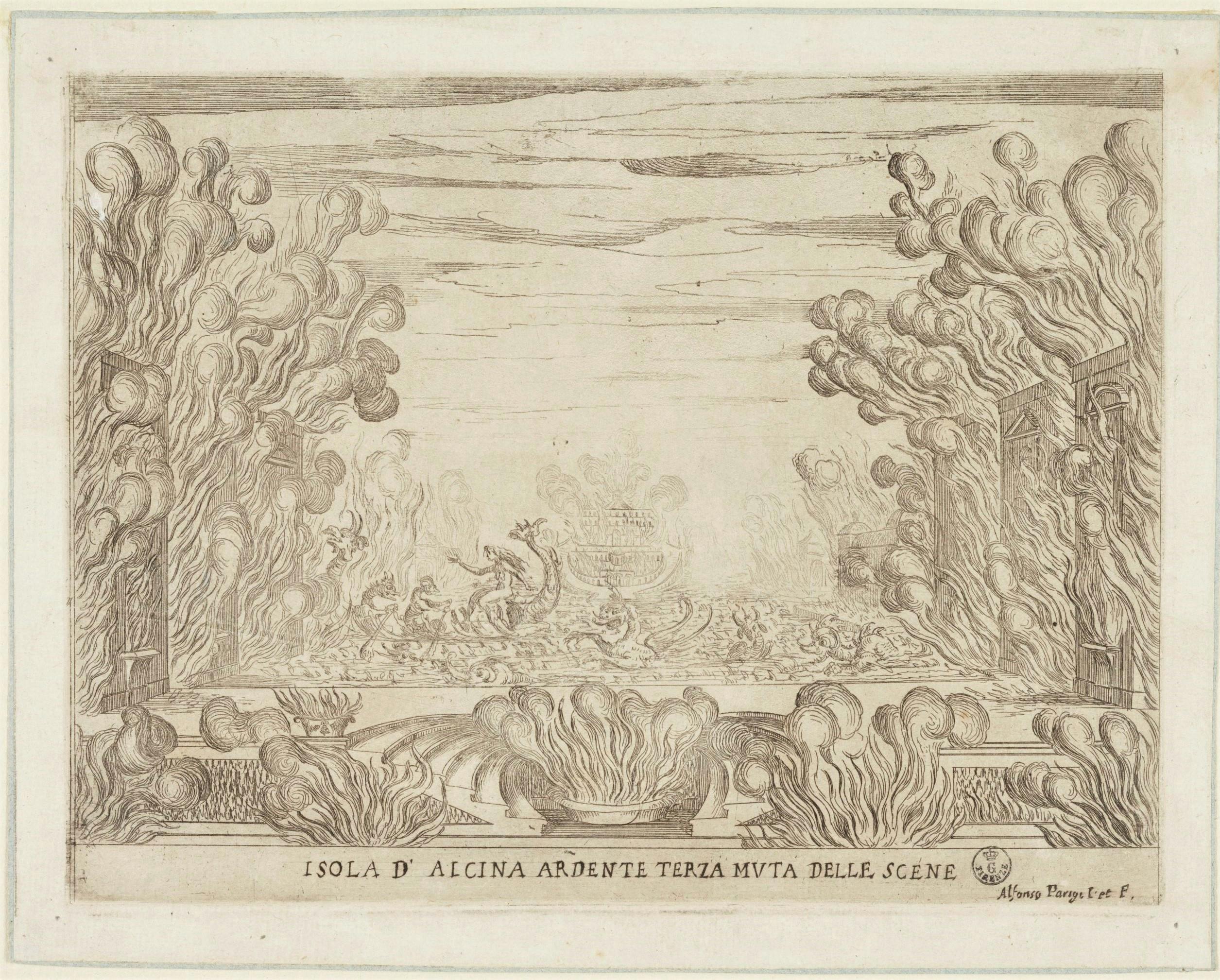The Liberation of Ruggiero from the island of Alcina. Island of Alcina burning. Third change of scene
Alfonso Parigi (Florence 1606 - 1656)
title “Island of Alcina. Third change of scene”, bottom right, “Alfonso Parigi I. et F.”
The “Liberation of Ruggiero from the island of Alcina” is an opera by Francesca Caccini, extremely successful performer and composer at the Medici court, from a libretto by Ferdinando Saracinelli. It was printed in Florence in 1625, the year in which the opera made its debut. The libretto contains five illustrations corresponding to the four scenes of the performance and the final ballet, as well as a frontispiece with dedication to Grand Duchess of Tuscany, Maria Maddalena of Austria, a great patron of the musical arts. The plates were etched by Alfonso Parigi, who printed the stage designs by his father Giulio, official architect to the Medici court. In this scene in particular, the witch, Alcina reveals her monstrous appearance and flees from her island, which is in flames after the enchantress Melissa had woken the paladin Ruggiero from the evil love spell that kept him away from his intended bride, Bradamante. The story was inspired by Ludovico Ariosto’s Orlando Furioso and, in keeping with the tastes of the court, its aim, in showing the defeat of love outside marriage, was moralistic.
